BGA Failure Analysis on Static Transfer Switch
Gideon Analytical Laboratories received one static transfer switch (STS) Main Logic printed circuit board (PCB) assembly with two chips onboard digital signal processor (DSP)’s that were non-functional. The thought was the DSPs may have ball grid array (BGA) solder joint integrity issues causing the failures.
Analysis ensued. The three DSPs were removed from the PCB and immersed into the green dye and the DSP was pried from the main circuit board to reveal any cracked solder BGAs. The pictures below show the front and back of the DSP; there were 67 solder balls that attached to the PCB more tenaciously than to the DSP when separated. There was no cracked BGAs nor evidence of poor solder joints.
The solder balls were removed cleanly from the PCB and DSP; the second picture below depicts the solder balls separated from the PCB. Visible in the picture are two solder balls where the solder fatigue occurred before the metallic interface or the adhesive. One picture below is of the intermetallic formation on the top side of the solder ball next to the DSP. The IM formation is much thinner on the top side as opposed to the bottom.
Gideon Analytical Laboratories came to some final conclusions. There was no dye penetration under any solder ball, all solder balls have good intermetallic formation, there were no cracks or solder de-wetting observed, and the strength of the bond was normal. The failing,in this case, was the DSP and not the solder joints making the connection.
Gideon Analytical Laboratories can provide essential and invaluable information to electronics companies looking for answers to why components fail. This information can help companies save time, money, resources, and better plan for the future.
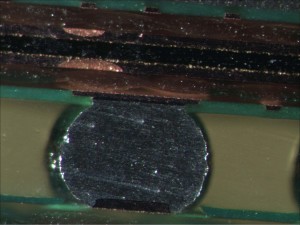
Solder Ball
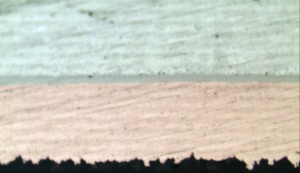
BGA Metallic Interface
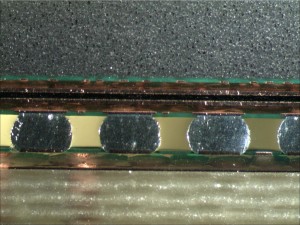
Cross-section of BGA
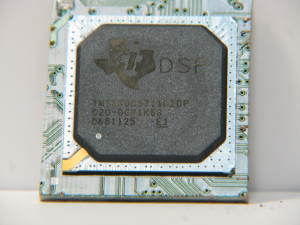
DSP Chip on Board
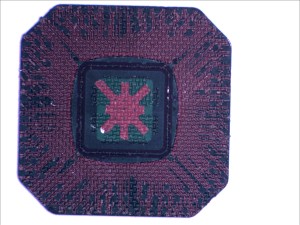
Circuitry for BGA